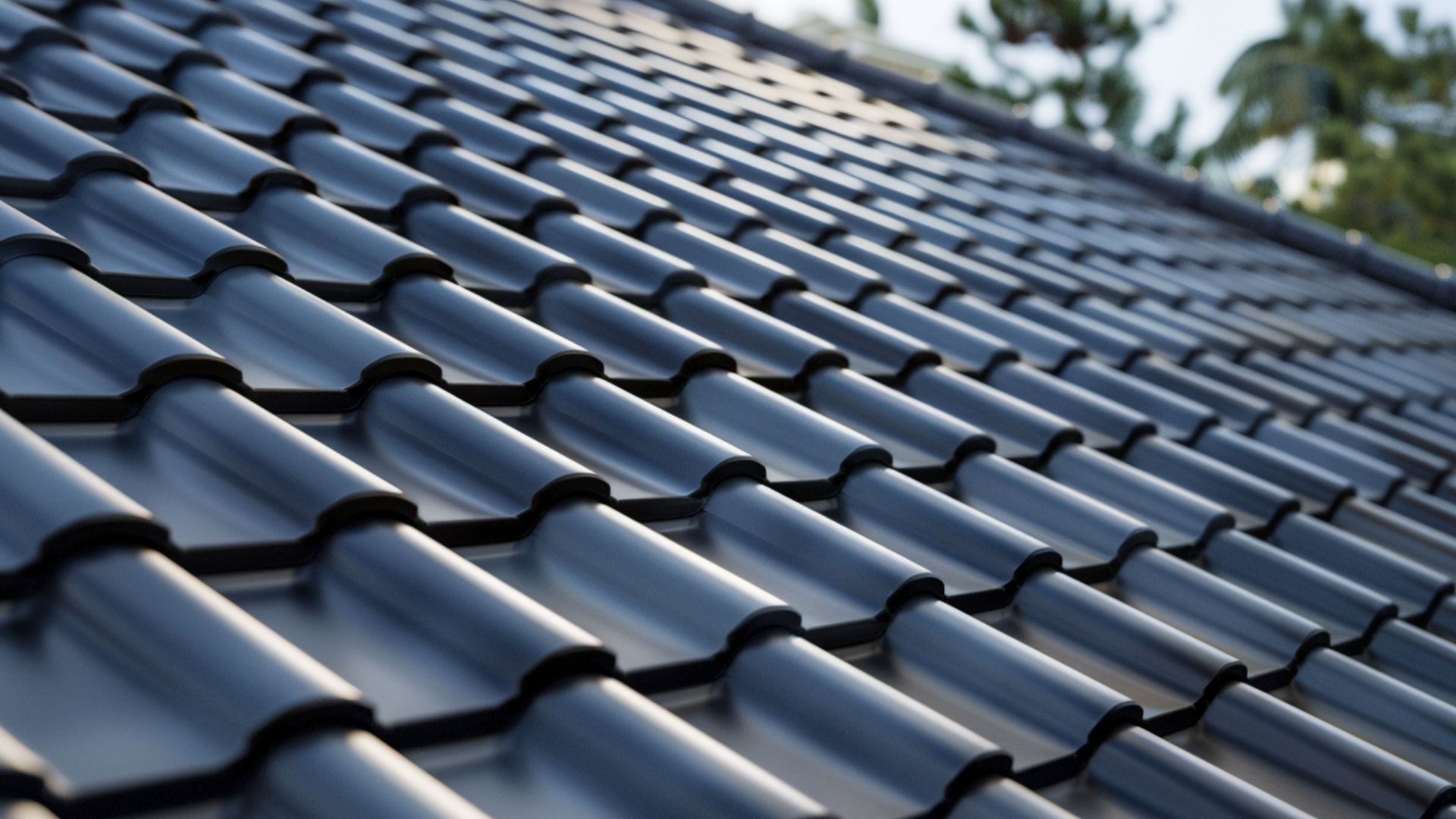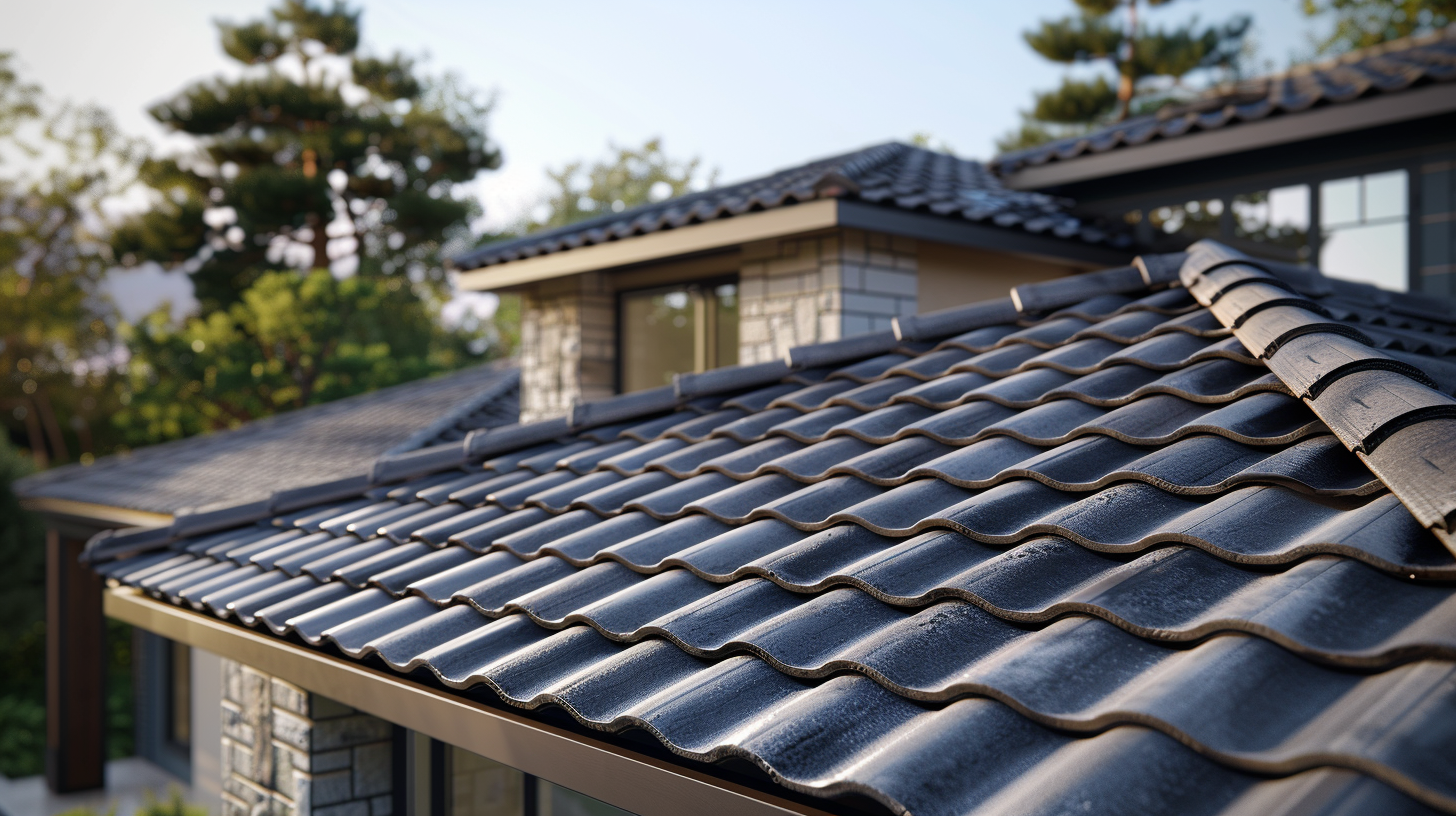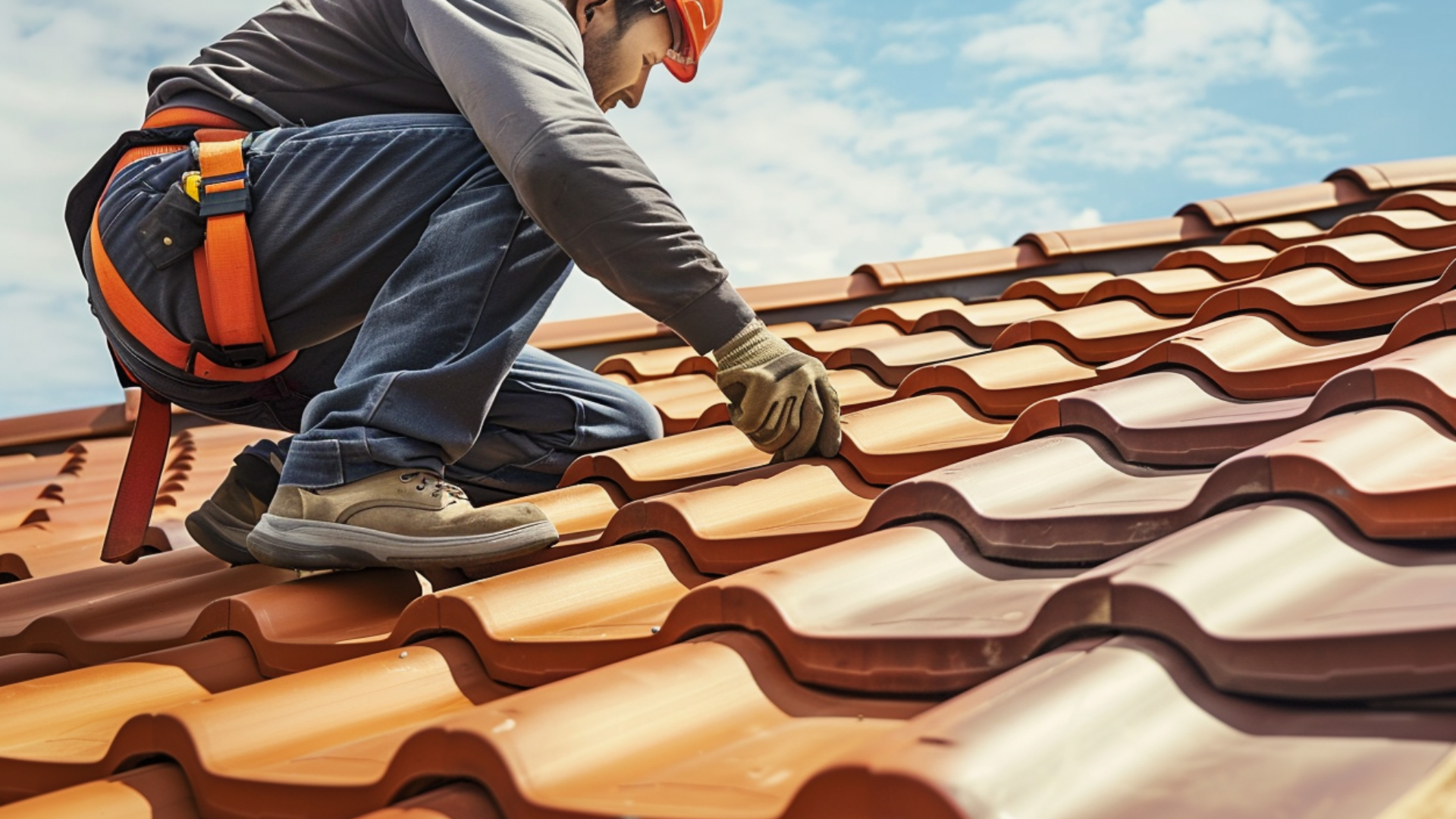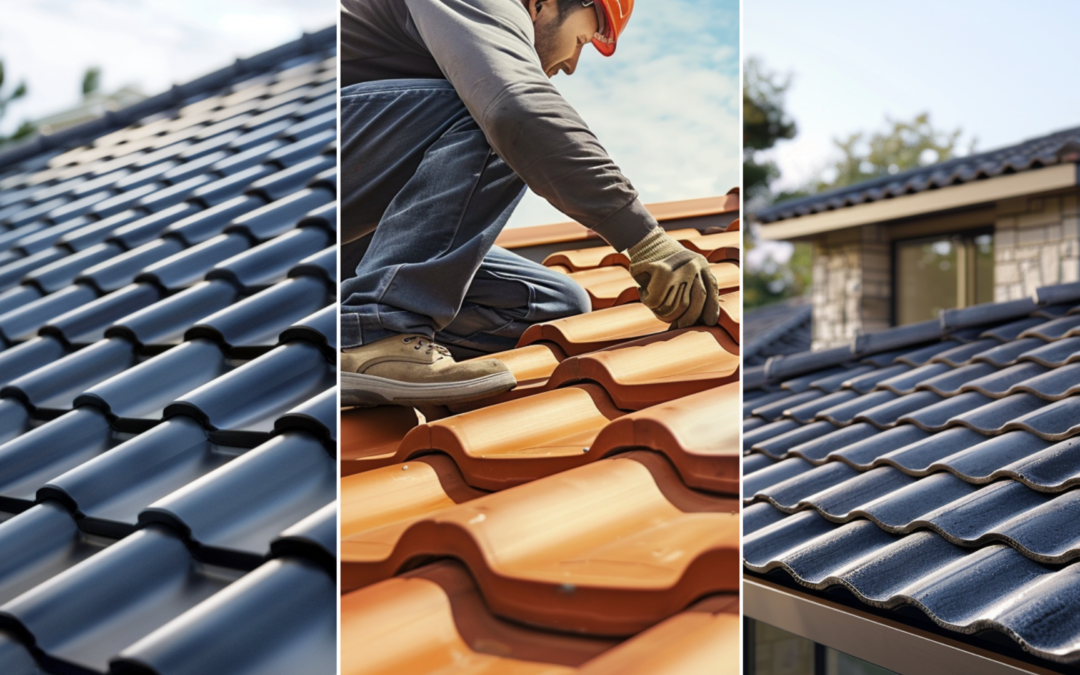Definition of Tile Roofing
Tile roofing is popular for homeowners looking for a durable and aesthetically-pleasing roofing option. Made from various materials such as clay, concrete, or slate, tile roofing offers a unique and elegant look that can enhance the curb appeal of any home. This type of roofing has been used for centuries and is known for its longevity and durability. In addition to its visual appeal, tile roofing offers many benefits and advantages, making it a preferred choice for many homeowners. From its ability to withstand extreme weather conditions to its energy-efficient properties, tile roofing provides many advantages that make it a worthwhile investment for any homeowner. Whether you are building a new home or considering replacing your existing roof, tile roofing is a versatile and reliable option that offers both functionality and beauty.
Tile roofing has a rich history dating back centuries, including the 10th century, 14th century, and 20th century. The origins of tile roofing can be traced back to ancient civilizations such as the Greeks, Romans, and Egyptians, who used clay and terracotta materials to create durable and fireproof roofs. Over time, tile roofing has evolved with the introduction of new materials such as concrete and improved manufacturing techniques. Today, various types of tile materials are used in roofing, each with unique benefits. Terracotta offers a classic and timeless look, while clay provides durability and resistance to extreme weather conditions. Concrete tiles, on the other hand, offer affordability and versatility. In addition to their functional properties, tile roofs add aesthetic value to a structure’s exterior. Their distinctive appearance enhances the overall architectural beauty of a building, making it stand out in a neighborhood. Common types of tile roofing include wood shakes, mission tiles, cement tiles, clay roofing tile, semi-cylindrical tile, metal tiles, and flat tiles. With its long history, range of materials, and aesthetic appeal, tile roofing is popular for those seeking a durable and visually appealing roofing option.

Tile Roofing - Types of Tile Roofing - Sky Roofing Construction & Remodeling
Types of Tile Roofing Materials
There are several different materials for tile roofing. Each type offers unique benefits and advantages. Whether you are looking for durability, energy efficiency, or aesthetic appeal, there is a tile roofing material that will meet your needs.
- Clay Tiles: Clay tiles are a popular option for tile roofing due to their durability and long lifespan. They are resistant to fire, pests, and mildew, making them a low-maintenance choice. Clay tiles also come in various colors and styles, allowing customization to match your home’s architectural style.
- Concrete Tiles: Concrete tiles are known for their strength and durability. They resist extreme weather conditions, making them suitable for areas prone to hurricanes and high winds. Concrete tiles also have a longer lifespan than other roofing materials and can be made to resemble other materials, such as wood or slate.
- Slate Tiles: Slate tiles are a premium option for tile roofing. They are highly durable, with a lifespan that can exceed 100 years. Slate tiles are resistant to fire, pests, and rot, making them a low-maintenance choice. Additionally, they offer a unique aesthetic appeal with their natural colors and textures. However, slate tiles are heavier and more expensive than other roofing materials.
- Composite Tiles: Composite tiles blend various materials, such as polymers, clay, and rubber. They offer the look of traditional tile roofing but with added benefits such as increased flexibility and lighter weight. Composite tiles are more affordable than natural materials and can be customized to match your home’s style.
Additional options in the roofing tile category include synthetic tiles, which mimic the appearance of natural materials with improved durability and lighter weight, and solar tiles, which integrate solar panels into the roofing material to provide energy efficiency and renewable energy production. Wood shingles offer a natural and rustic look but require more maintenance and a shorter lifespan than other tile options. For those interested in environmentally friendly options, a cool roof can reflect more sunlight and absorb less heat, improving energy efficiency and reducing cooling costs.
Concrete tiles, including concrete roof tiles and concrete tile roofs, have a rich history and distinct characteristics, making them an appealing roofing option. Developed by Adolph Kroher in the 1840s, concrete tiles gained popularity due to their affordability and durability. Using regional minerals, such as limestone and clay, to create a stucco-like material, the DIY method of tile manufacture allowed for easy production and installation. Over time, the concrete tile industry experienced significant growth, becoming widely used internationally.
However, it’s important to note that concrete tiles have some weaknesses compared to clay tiles, such as being more prone to cracking and chipping. Nonetheless, concrete tiles’ history, characteristics, and development continue to make them attractive for those interested in timeless and reliable roofing options. The design of tile roofing systems often involves intricate placement patterns, with each tile contributing to the roof’s overall aesthetic and functional performance.
Clay tiles, including clay tile roofs, clay tile roofing installation, and architecture clay roofs, are famous for roofing due to their various types and characteristics. Available in an array of colors and shapes, clay tiles can be customized to match any architectural style. Additionally, the use of copper and metal accents enhances the aesthetic appeal of these tiles. With a historical background, clay roof tiles were traditionally made by hand, but technological advancements have led to a more efficient machine-driven manufacturing process. Several factors need to be considered when considering the installation of clay roof tiles. Their weight should be considered, as they are heavier than other roofing materials and may require roof reinforcement. Although clay tiles are durable, they can break easily, so caution must be exercised during installation and maintenance.
French tiles are a popular choice for roofing due to their low profile, robust interlocking design, and timeless look. These tiles, with their distinct characteristics, have a rich history that dates back to the 19th century when the Gilardoni brothers first created them. The roofing tile design during this period set the foundation for modern French tiles. The French tile profile was later adapted and evolved into variations like the Ludowici Z1 tile. These variations maintain the original French tiles’ appeal while offering homeowners additional design options. With their durability, style, and longevity, French tiles are a top choice for those seeking a high-quality, aesthetically pleasing roofing solution. The earliest roof tiles, including the initial French designs, significantly shaped contemporary roofing aesthetics and functionality.
Composite tiles offer numerous advantages over natural stone, wood, clay, metal, or concrete tiles for roofing purposes. Made from natural and artificial materials, composite tiles can easily replicate the look of any tile roofing product. One of the main benefits of composite tiles is their lighter weight, making installation more accessible and cost-effective. Additionally, composite tiles often come with good warranties, providing peace of mind for homeowners. These tiles are also relatively easy to install, especially when done by experienced roofing contractors.
Slate roof tiles are known for their elegant and unique appearance, making them a popular choice for homeowners. The color of slate tiles can vary, offering a range of aesthetic options to complement different architectural styles. They provide various advantages, including exceptional durability and longevity, as slate is a natural stone that is highly resistant to weathering and can withstand extreme temperatures. Additionally, slate tiles have excellent fire-resistance properties, providing homeowners peace of mind. However, their installation and handling can be challenging due to their weight and fragile nature, requiring skilled professionals for proper installation.
Another disadvantage is the high cost of slate tiles, considered premium roofing materials. Furthermore, if any repairs are needed, it can be challenging to find matching slate tiles, and the process can be labor-intensive and expensive. It’s also important to note that due to the weight of slate tiles, the roof structure may need to be reinforced to support the added load. For those looking for a more affordable alternative, composite slate roof tiles offer similar aesthetic appeal and benefits but with lighter weight and easier installation. Despite these potential difficulties and costs, the benefits of slate roof tiles make them a desirable option for those seeking a long-lasting and visually striking roofing solution.

Tile Roofing - Benefits of Tile Roofing - Sky Roofing Construction & Remodeling
Tile roofing has been a popular choice for homeowners and builders alike for centuries, including types of roofing materials and roofing professionals, and for good reason. With its timeless appeal and exceptional durability, tile roofing offers a wide range of benefits, making it a standout option for any home. Whether you’re considering a roof replacement or building a new home, understanding the advantages of tile roofing, such as the durability of stone and gauge stone, can help you make an informed decision. There are numerous benefits of tile roofing, including its longevity, energy efficiency, low maintenance requirements, and its ability to enhance the curb appeal and value of your home. Tile roofing is environmentally friendly and offers excellent protection against fire and extreme weather conditions. If you’re looking for a roofing option that is aesthetically pleasing and delivers long-lasting performance, tile roofing should be at the top of your list.
Tile roofs, including popular materials, are known for their energy efficiency, offering numerous advantages over asphalt shingle roofs, including efficient roofing products and atmospheric conditions. Unlike asphalt shingles, tile roofs provide superior thermal protection and airflow, keeping homes more relaxed during the summer and warmer in winter. This impressive thermal insulation can reduce energy costs by up to 20%. Additionally, choosing lighter color asphalt tiles further enhances the solar reflective properties of a roof, contributing to overall energy efficiency. With their ability to promote roof airflow and provide adequate thermal protection, tile roofs are an innovative and sustainable choice for homeowners seeking energy efficiency.
Tile roofing, including installation costs, is known for its exceptional longevity and durability compared to asphalt roofs, including entire roof, long-lasting roof, usage of roof tiles, and durability of roofing tiles. While asphalt roofs generally have a lifespan of 20 to 30 years, tile roofs can last up to 50 to 100 years or even more. This remarkable durability is due to the robust nature of the tile, which can withstand harsh weather conditions, including high winds, heavy rains, and extreme temperatures. Unlike asphalt roofs, which are prone to damage from falling debris or hail, tile roofs are highly resistant to such impacts. Additionally, tile roofs are not susceptible to pests like termites, which can cause significant damage to asphalt roofs. However, it is essential to note that tile roofs may require periodic maintenance to ensure their longevity, such as replacing broken or cracked tiles. The durability of stone and the long-lasting beauty of tile roofs make them a preferred choice for many homeowners. It is also essential to gauge stone quality when selecting tiles for roofing to ensure maximum performance and longevity.

Tile Roofing - Variety of Colors and Styles - Sky Roofing Construction & Remodeling
Variety of Colors and Styles
Tile roofing, including copper roof tiles, flat roof tiles, metal roof tiles, composite roof tiles, types of roof tile, material composition, designs of roof tile, and long-lasting beauty, offers a wide variety of colors and styles, making it a versatile option for any architectural style, including Javanese architecture, vernacular styles, Chinese architecture, and Buddhist temple architecture. From the classic and elegant Spanish tiles to the sleek and contemporary Scandia tiles, there is a tile roofing style to suit every preference. The Double Roman tiles provide a timeless and sophisticated look, while flat shake tiles offer a more rustic and natural appearance. Pantile roofs are a popular choice for a Mediterranean-inspired design, and barrel tiles add a touch of exotic flair. French tiles exude a charming and traditional aesthetic, while Riviera tiles bring a touch of elegance to any structure. With such a varied range of colors and styles, tile roofing allows homeowners to customize their roofs to perfectly complement their architectural style, creating a visually appealing and cohesive overall look. The architecture uses clay roof tiles, often arranged in a single-tile pattern. Ludowici roof tiles fall under a specific category of roofing tile known for their durability and aesthetic appeal. The tile roofing installation process involves careful planning and placement of each tile to achieve the desired design of the tile. French pattern tiles, in particular, offer a unique and sophisticated option for roofing.
Popular Styles of Tile Roofing
Tile roofing is famous for homes and buildings due to its durability, longevity, and aesthetic appeal. With its timeless beauty and classic look, tile roofing has been used for centuries and remains popular today. Whether considering a roof replacement or exploring options, understanding the various methods used in tile roofing can help you make an informed decision that best suits your needs and preferences. From traditional clay roofing tiles to modern cement tiles, including composite slate and conventional roof tiles, there is a wide range of styles to choose from, each with its advantages and distinctive charm. Styles like the French pattern tile or individual shingle offer additional options, all made from fireproof materials, ensuring safety and longevity.
Solar roof tiles combine energy efficiency with the aesthetics of tile roofing. Tile roof installation requires precise techniques for durability and proper alignment. Traditional options such as mission tiles, copper roof tiles, flat roof tiles, and metal roof tiles provide a variety of textures and finishes. Each material, from classic clay roofing tile to advanced metal roof tiles, offers unique benefits, making tile roofing a versatile choice for any architectural style.
Spanish tile roofing is known for its unique characteristics and advantages. Its rounded design and distinct Spanish flair add elegance to any home. One of the critical benefits of Spanish tile roofing is its recyclable nature, making it environmentally friendly. Additionally, Spanish tile is highly fire-resistant, providing homeowners with peace of mind and safety. Its distinctive design and authentic Spanish aesthetic stand out from other roofing options, such as the Coastal Wave Tile and Brava’s Synthetic Spanish Barrel Roof Tiles. Spanish tile roofing is beautiful and durable, making it a popular choice for enhancing curb appeal while enjoying long-term benefits like recyclability and fire resistance.
The tile design in Spanish roofing often includes intricate patterns, such as s-shaped Spanish tiles, a hallmark of this style. Each tile contributes to the roof’s overall aesthetic and structural integrity. Spanish tile roofing falls under a specific category of roofing tile known for its aesthetic appeal and functionality.
The use of thousands of terracotta tiles in traditional Spanish roofing dates back to the 19th century, showcasing the industry’s long history and extensive experience. Industry updates continuously improve the quality and sustainability of Spanish tiles, ensuring they remain a top choice for modern homeowners.
Discover the Benefits of Tile Roofing with Sky Roofing Construction & Remodeling
Tile roofing offers a timeless blend of durability, beauty, and versatility, making it an excellent choice for any home. Whether you prefer the classic look of clay tiles or the modern appeal of composite tiles, tile roofing enhances both the functionality and aesthetic of your home. To explore the best tile roofing options for your needs, contact Sky Roofing Construction & Remodeling (
https://skyroofingconstructiontx.com) at (210) 942-9797 to get a free quotation.




